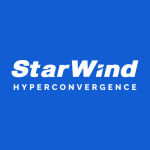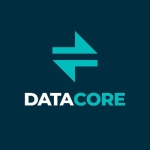What is most valuable?
The HPE StoreVirtual Network RAID-10 (mirroring between nodes) is the most valuable feature. This allows for multi-node redundancy. If one node fails, the other in the cluster picks up the entire load. I have had nodes fail due to upgrade and other issues with no loss of data. Resync is automatic as is failover. For a 3 node system you do need an independent failover manager, but that is normal for clusters.
How has it helped my organization?
I administer a 100% virtual environment. To use the HPE StoreVirtual VSA edition, I did not have to buy an expensive external array. I was able to create two 3.27TB usable HPE VSAs from all the older disks I had laying around. Granted, eventually, I did purchase two storage blades to be used by the VSA, but that is not how usage started. Recently, I have been using HPE StoreVirtual on KVM as well.
What needs improvement?
The management console upgrade needs a bit of work. In some cases, it will not upgrade due to the non-removal of other HPE StoreVirtual Components. Be sure to remove other components first. The other issue is a login issue. There is a built-in timeout and once that timeout hits, the only way to log back in is to kill the management console. That bit me hard during an upgrade and I had to reinstall one of my nodes. There is a replay or login cache that is not working properly and should be settable by the administrator and disabled during upgrades. Sometimes upgrades can take a while.
For how long have I used the solution?
Since version 8.5 or 3+ years. I have gone through many upgrades and am now at the latest.
What do I think about the stability of the solution?
HPE StoreVirtual is quite stable, except for the login issues, but only if you have at least 2 nodes. Built-in redundancy for Network RAID-10 mode is very stable.
What do I think about the scalability of the solution?
My environment grows with me; I can expand it up to 10 TBs before I have to re-license. In addition, it is possible to build an all flash version of HPE StoreVirtual. One of these days, I look forward to doing just that.
How are customer service and technical support?
When I have a problem, I will call support; I've called support once. It was really not a StoreVirtual problem as much as it was a management console problem, and they solved it fairly quickly.
Which solution did I use previously and why did I switch?
Actually, at the time of my initial use, I did try building my own iSCSI server (I still have that running actually) but HPE StoreVirtual has many more features and works for me. Today, I also have VMware VSAN, HPE StoreVirtual, and even a fibre channel array. I have had a fibre channel infrastructure for well over 12 years. I needed an iSCSI environment as well. This was the best option at the time and today is a core part of my virtual environment.
How was the initial setup?
Initial setup is fairly straightforward. You get a bunch of disks, put it into your system, present it as a virtual disk, install your VSA, done. You want redundancy of two nodes, install another and tie them together, after installing the fail over manager virtual machine as well. Instant three node cluster. It self discovers all components as well. My most complex thing was actually making sure it was secure. That involves adding more firewall, split networking, and pull it into hypervisor management for VAAI and so on. That took a little bit of effort, but it is not overwhelming.
I bought one one year and the second the next year. I’m a typical small enterprise, where I plan all my expenses very carefully. Until I had both of them, I didn't put anything mission critical on it.
What's my experience with pricing, setup cost, and licensing?
Be sure to get 2-nodes for redundancy. Licensing changes at the 10TB mark.
Which other solutions did I evaluate?
I run a 100% vSphere environment, and KVM. I actually built my own iSCSI server that was for ESXi and I used it to upgrade all my SANs. I have a SAN, as well - a fibre channel SAN - and when I upgrade that, I've upgraded it three times; it's a rip and replace, and the other one was rip and replace all the drives. I just moved everything to my local iSCSI server, but that was unstable.
What other advice do I have?
The management console could be a lot better, as it's got a little clunky feeling. It needs a lot of work on some parts of it, and on the integration with the components that I need inside of the vSphere environment and the KVM environment. It's there, but it's a little antiquated. There are some things coming out that I heard about at HPE Discover that will make my life a lot easier. I'm likely going to upgrade some of it in pieces again, so I don't lose my redundancy.
Check it out. The redundancy is there. The real thing is to make sure you know what you're buying. If you buy any VSA by any company out there, it's tied to a single piece of hardware. Now, you can move it around by doing storage vMotion, but if you have 3 TB, then you need 3 TB free somewhere else. That doesn't move fast, so the idea is to do redundancy and to build that in. To bake that in and build that into your costing model and to plan that. Either do it upfront or plan to do it eventually. That means a minimum of 2 nodes plus a fail over manager.
Disclosure: My company does not have a business relationship with this vendor other than being a customer.










HPE has released a new StoreVirtual 3200 hardware solution with a new UI. It looks like the UI from HPE OneView and HPE 3PAR StoreServ Management Console (SSMC) - modern web UI. Have not heard if it is also coming to other StoreVirtual installs, but seems logical. Check out Calvin Zito's ChalkTalk about the 3200 - www.youtube.com - the UI makes an appearance in the video.